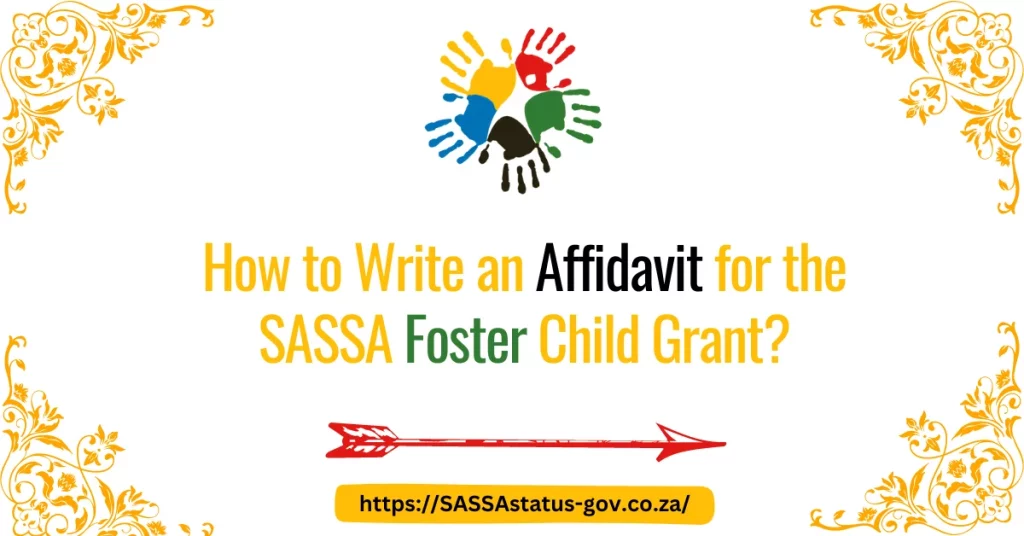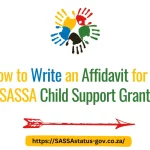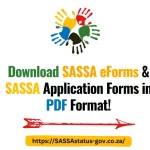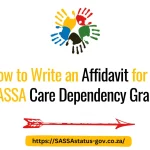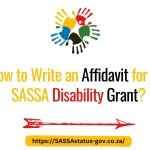As a foster parent in South Africa, I understand the importance of the Foster Child Grant provided by the South African Social Security Agency (SASSA). This financial support is crucial for caring for children placed in our homes.
In 2024, the process of applying for this grant requires careful attention to detail, especially when it comes to writing the affidavit. I’ll guide you through the steps to create an accurate and comprehensive affidavit for your SASSA Foster Child Grant application.
How to Write an Affidavit for the SASSA Foster Child Grant in 2024? (Short Answer)
To write an affidavit for the SASSA Foster Child Grant in 2024:
- Gather personal information (name, ID, address)
- List foster children’s details
- Confirm foster care status
- Declare marital status
- Provide spouse information (if applicable)
- Make a declaration of truthfulness
- Sign and date the document
- Get certified by a Commissioner of Oaths
Download Affidavit for the SASSA Foster Child Grant
Open below link and download Affidavit for the SASSA Foster Child Grant.
https://services.sassa.gov.za/portal/r/sassa/files/static/v58/Affivadit_FCG_New.pdf
Understanding the Foster Child Grant
The Foster Child Grant is a monthly payment designed to help foster parents meet the needs of children in their care. In 2024, this grant continues to be a vital resource for many South African families. Before diving into the affidavit writing process, it’s essential to know that you qualify if:
- You’re a South African citizen, permanent resident, or refugee
- You’re the court-appointed foster parent
- The foster child lives with you
- The child is under 18 years old
Gathering Necessary Information
Before you start writing your affidavit, collect all the required information:
- Your full name and ID number
- Your physical address and postal code
- Details of each foster child (full name and ID number)
- Your marital status
- Spouse or partner’s information (if applicable)
How to Write an Affidavit for the SASSA Foster Child Grant in 2024?
Now, let’s break down the process of writing your affidavit:
1. Start with Personal Details
Begin your affidavit by stating:
“I, the undersigned [Your Full Name], with ID Number [Your ID Number], residing at [Your Physical Address], Postal Code [Your Postal Code], do hereby state under oath that I am applying for a Foster Care Grant for the following child(ren):”
2. List Foster Children
For each foster child, provide:
- Full name and surname
- ID number
Example: “1. Name & Surname: [Child’s Full Name] ID No.: [Child’s ID Number]”
Repeat this for each foster child, up to a maximum of six children.
3. Confirm Foster Care Status
Include this statement: “The child(ren) mentioned above has been placed into my Foster Care in terms of the Children’s Act 2005. I confirm that the child(ren) resides with me and does not reside in a State Funded Institution.”
4. Declare Marital Status
Indicate your marital status by marking the appropriate box with an X. Options include:
- Married (In community, Out of community, Civil Union, Customary Union, Asiatic Religion)
- Never Married
- Divorced
- Widow / Widower
- Deserted > 3 months
5. Provide Spouse Information (if applicable)
If you’re married, divorced, or widowed, you’ll need to provide information about your spouse or ex-spouse. Include their full name and ID number. If you can’t provide certain documents (ID Document, Decree of Divorce, or Death Certificate), explain why.
6. Make a Declaration
End your affidavit with this declaration: “I declare that all information furnished in this affidavit is to the best of my knowledge true and correct. I have no objection to taking the prescribed oath and I consider the prescribed oath to be binding on my conscience.”
7. Sign and Date
Leave space for your signature (or thumb print) and the current date.
8. Getting the Affidavit Certified
After completing your affidavit, you need to have it certified by a Commissioner of Oaths. This could be a police officer, lawyer, or other designated official. They will:
- Verify your identity
- Witness you signing the affidavit
- Sign and stamp the document
- Add their name, rank, and force number (if applicable)
Important Considerations for 2024
In 2024, SASSA may have updated requirements or processes. Always check the official SASSA website or contact their helpline for the most current information. Some points to keep in mind:
- Digital Submissions: SASSA might offer online submission options for affidavits. Check if this is available in your area.
- Biometric Verification: Some SASSA offices may use biometric systems to verify identities. Be prepared for this possibility.
- Supporting Documents: Along with your affidavit, you’ll likely need to provide additional documents like ID copies, court orders, and proof of residence.
Tips for a Strong Affidavit
- Be Honest: Provide truthful information to avoid legal consequences.
- Be Clear: Use simple language and avoid jargon.
- Be Thorough: Include all relevant information without omitting important details.
- Proofread: Check for errors or inconsistencies before submitting.
Conclusion
Writing an affidavit for the SASSA Foster Child Grant in 2024 requires attention to detail and honesty. By following these steps and guidelines, you can create a comprehensive affidavit that supports your application.
Remember, this grant is designed to help you provide for the foster children in your care, so take the time to complete this process correctly. If you have any doubts or questions, don’t hesitate to seek help from SASSA officials or legal professionals.
Your dedication to this process reflects your commitment to the well-being of the children in your care.

I’m Anele Zulu, a South African social worker dedicated to serving my country’s most vulnerable. With my degree and field expertise, I empower underprivileged communities through compassionate support and tireless advocacy on this website. My goal is simplifying access to services so families can uplift themselves

